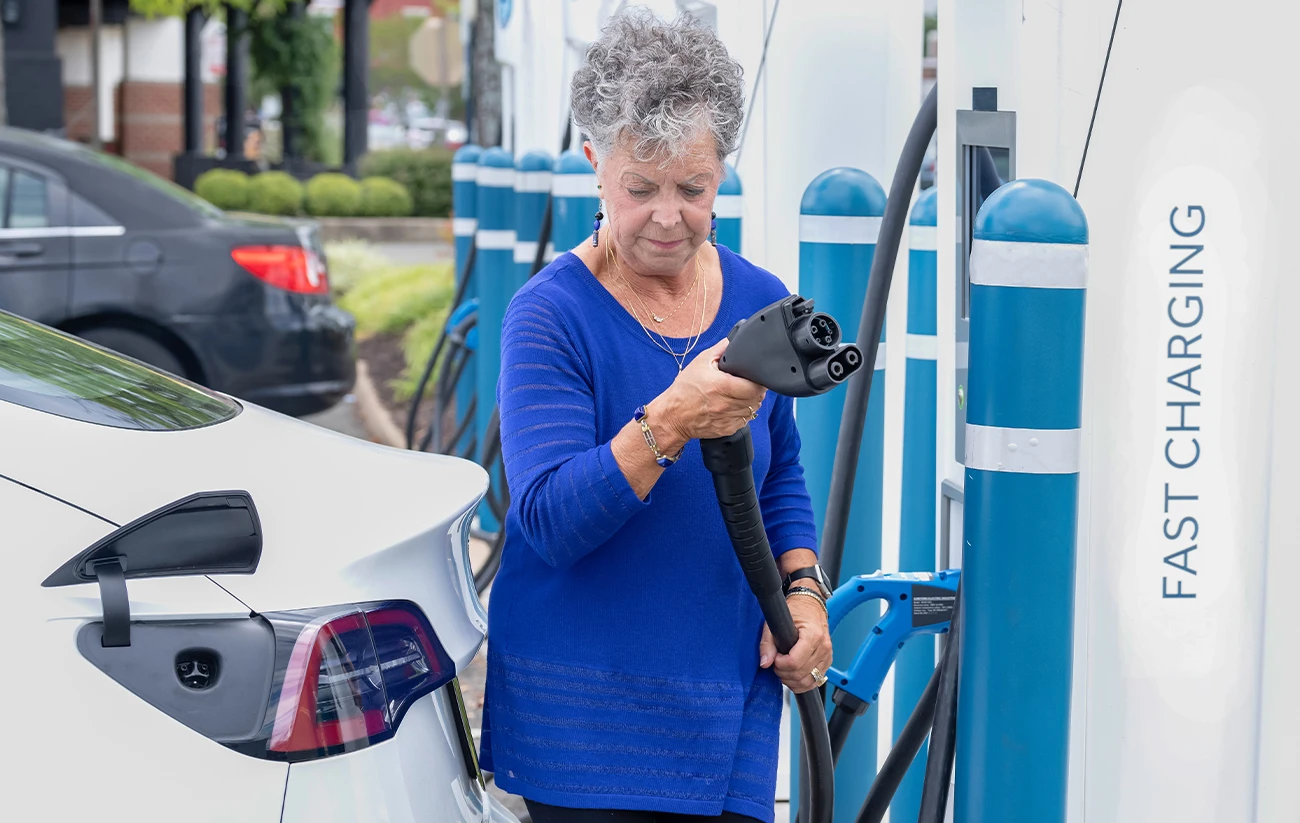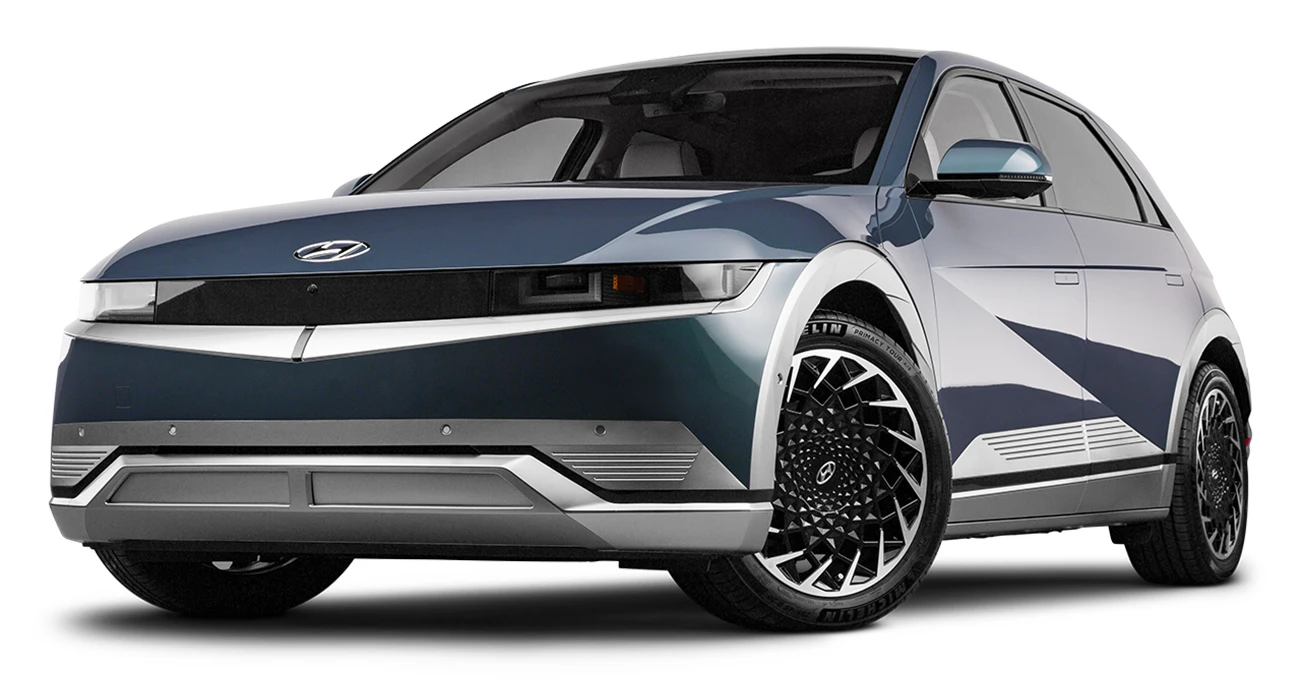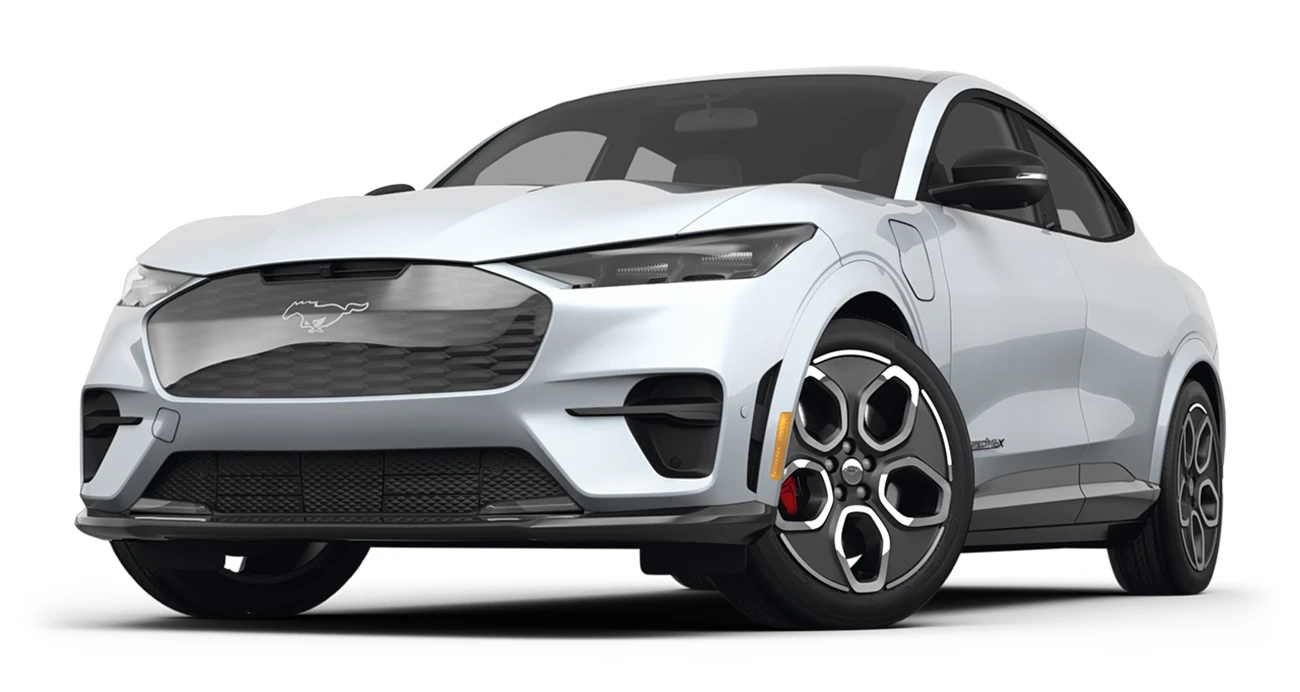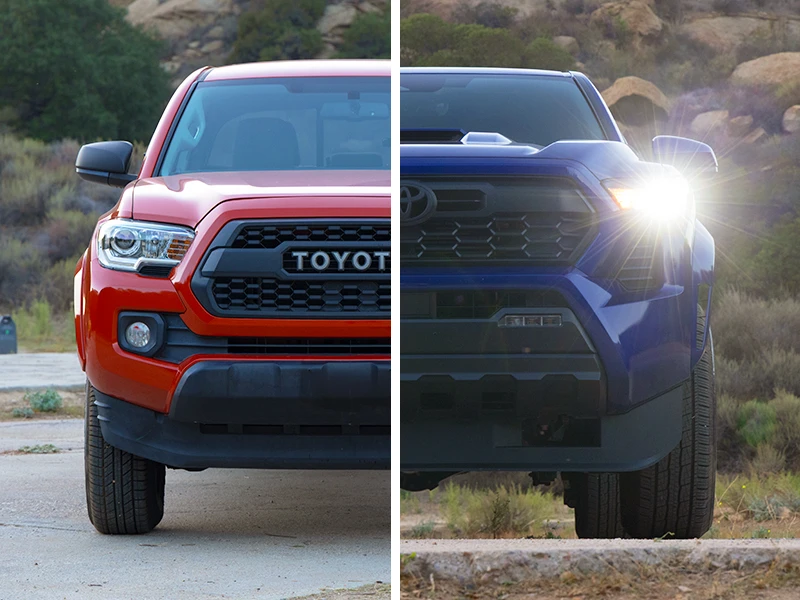
You're in the market for a used electric vehicle. Maybe you're hoping to save money on fuel, cut down on emissions, or are excited by the new technology. Whatever the reason, owning an EV means you're likely thinking about your car's range for the very first time.
Range is one of the first things you look at when researching an electric car. Having a long range can be a big selling point for an EV, and that extra range often comes with a higher price. But how much range do you really need? Is there such a thing as too much range? And what other factors impact your range?
What do we mean by “range”?
Range is how many miles your vehicle can go when it's full of fuel. That fuel can be electricity, gasoline, hydrogen … you get the idea. The 2022 Honda CR-V can go nearly 500 miles on the highway with a full tank of gas, while the 2022 Mustang Mach-E can go more than 300 miles on a single charge. At first glance, it seems like gasoline-powered cars have an advantage when it comes to overall range. But that’s not the whole story. For more, take a look at our article on electric cars vs gas cars.
If you charge your electric vehicle every night, say a Toyota bZ4X, you can start every day with a full tank. So while your gas-powered car comes with the convenience of a quick fill-up and numerous stations to refuel, an EV has the advantage of filling up while you're getting a good night's sleep.
Calculating your electric car range needs
Our rule of thumb is to get enough range to cover your daily commute three times over. If you'll be commuting 30 miles round trip per day in your electric car, you'll want a vehicle with at least 90 miles of range. When we say “commute,” it’s just shorthand for daily miles driven. If you'll be shuttling people all over town multiple times a week, you might want to consider this question differently.
If you’re thinking of replacing your gas-powered car with an EV, use your current car’s odometer to calculate how many miles you drive each day. You might be surprised by how much driving you do. Americans drive, on average, 13,476 miles per year, according to the U.S. Department of Transportation. That makes for an average daily driving distance of about 37 miles, which means the average American should only need an EV with 111 miles of range, right? Almost every electric car on the market can beat that number, so problem solved!
Not quite. A lot of other factors can change that calculation, like the weather where you live, where you charge up, your driving style, and whether or not you want a vehicle with all-wheel drive. We'll get into all that in more detail later, but it's something to keep in mind.
Most shoppers can rest assured that, so long as they can install a charging station where they live, the majority of EVs will be able to handle their daily commute.
Charging your electric car at home

Most EV owners charge at home. That makes sense since it's usually the most cost-effective and convenient way to put electricity into your vehicle. We've got all the information you need on charging, whether that's at home or on the road, in this article.
There are two ways to charge your EV at home. You can use a Level 1 charger, which plugs into the same kind of 120-volt outlet you use for household appliances like a toaster or a microwave. Level 1 chargers add electricity very slowly, usually only between 5 and 8 miles per hour. If your commute is short or your EV has limited range, like an older model of the Nissan Leaf or Chevrolet Bolt, that might not be a problem.
Keep in mind that using a Level 1 charger could leave you with a charge deficit if you have a day, or multiple days, where you need to drive around town to run errands. If you can only add 50 or so miles overnight, but you frequently use more of that charge on back-to-back days, you might want to consider upgrading to a Level 2 charger.
Using a Level 2 charger involves calling up an electrician, who can install the charger into a 240-volt outlet, like you'd use for your oven or an electric dryer. Level 2 chargers typically add 10-20 miles per hour. How much does installing a Level 2 charger cost? That depends greatly on your location and the construction of your home, but it can cost upward of $1,000 in some situations. Some state and local governments and utility companies offer financial assistance. It can be worth the investment, especially if you drive more than 40 miles per day.
Charging at a public charging station

Public charging stations can be a great way to quickly recharge your electric car. At some fast-charging stations, EVs can add more than 10 miles of range a minute. The ultra-pricey Lucid Air can add up to 20 miles per minute, while the much more affordable Kia EV6 can add up to 14.5 miles per minute. The Tesla Model 3 can add up to 15 miles per minute when plugged into a Tesla Supercharger.
If you live in an area with a lot of fast chargers, and you can take a bit of time out of your day for charging up, you may not need special equipment at home. Just remember, you’ll need a charger that can provide sufficient current and an electric car that can work with it. Not every fast charger has the same output, so depending on the chargers in your area, your mileage may vary.
You’ll also pay a premium for these kinds of speeds. Public charging can cost two to three times as much as charging at home, depending on when you charge and what kind of charger you're using. A good rule of thumb is that the faster the charger, the more expensive it will be. Also, using fast chargers all the time can lead to battery degradation, causing it to hold less charge over time.
This is also true for charging your battery higher than 80%. You might notice that your EV's battery will rapidly charge to 80% before slowly charging from 80% to 100%, much like a modern smartphone. That's done to protect the integrity of the battery. If you can, it's better to only use fast chargers when you absolutely need to so you can protect your battery and save money. And when you do, try to only charge up to 80% to keep your battery in good condition.
Taking a road trip in an electric car

The number of publicly available charging stations in the U.S. has doubled since 2019, and that type of rapid expansion will continue as more EVs hit the road. But taking a road trip in an electric car will depend in part on your vehicle's range, the number of available chargers along your route … and your personal level of patience.
Plenty of websites, apps, and maps are available if you want to see what the charging infrastructure looks like where you live and where you're headed. Just keep in mind that routes in certain parts of the country, in particular, California, Texas, and Florida, may have more chargers to offer than in Montana, Hawaii, or Wyoming.
You'll also want to consider whether your destination has charging readily available. Some hotels offer EV charging, but you may be relying on a public charging network once the first leg of your road trip is complete.
Another thing to keep in mind is most electric cars will charge much more quickly from zero to 80% than from 81% to 100%. Hopping from charger to charger and filling up to 80% can be a more efficient way to plan your road trip. So if you plan on road-tripping an electric car, having more range can save you time.
Cold weather affects electric vehicle range

EVs don't love cold temperatures. We're not talking about the blissful 50-degree days that make up a California winter. Once the thermometer drops below freezing, some EVs can see their range drop by as much as 35%. The precise amount of range you'll lose during cold weather depends on just how cold it is and what kind of EV you're driving.
If it gets below freezing where you live, you’ll want to add an extra 30% to your range calculation, and you’ll definitely want a home charging station. Electric cars can warm their batteries up to operating temperature while plugged in, which will help extend your driving range.
While warm temperatures don't have the same negative effect on an electric car's battery, other things will. It's worth keeping in mind that running your air conditioning affects your EV's range, particularly if you're running the AC at full power. Don't expect to get the same range on a 110-degree day in Arizona as you might on a 70-degree day on the California coast.
All-wheel drive impacts EV range
If you live in a cold, snowy place, you might want a vehicle with all-wheel drive. Adding all-wheel drive on an electric vehicle usually involves adding a second motor—one on each axle. That setup can also give the electric car more power. Many of the quickest electric vehicles use dual motors, and the Tesla Model S Plaid offers three motors, delivering incredible acceleration.
Those extra motors usually mean a less efficient EV. Take the Volkswagen ID.4, for example—it's offered in both all-wheel-drive and rear-wheel-drive trims. The ID.4 Pro has an 82-kWh battery on board, as does the ID.4 Pro AWD. But the range for the rear-wheel-drive ID.4 is an EPA-estimated 275 miles, 20 miles more than the all-wheel-drive version of the vehicle.
This is also true on vehicles like the Tesla Model S. The dual-motor Model S offers nearly 20 miles more EPA-estimated range than the tri-motor Model S Plaid. Whether you're looking for more traction or performance, remember that adding AWD comes at the cost of EV range.
Driving style impacts your electric vehicle range
Just like in a gas-powered car, your driving style matters. If you drive aggressively and floor the accelerator all the time, you'll drain the battery more quickly than if you leave stoplights more carefully. The same can be said for coming to a stop, thanks to regenerative braking. Often called "regen braking," electric vehicles can recharge their batteries by using the electric motor as a generator, creating resistance that slows the car and feeds electricity back into the battery. That's done most efficiently when coming to a smooth stop, where the electric motors can recoup the most electricity. Stomping on your brakes at the last minute doesn’t regenerate nearly as much.
While regenerative braking is a new wrinkle added to EVs, the overall rule of thumb is the same as for driving your gas car. If you drive at a consistent, moderate rate of speed, you'll find you squeeze more range out of your electric car.
If you're still exploring your options, you'll find these related articles helpful:
EVs with more than 200 miles of range

It's now common for electric vehicles to come with well over 100 miles of EPA-estimated range. Some used EVs, particularly some older models of the Nissan Leaf or BMW i3, might fall short of this threshold. But newer cars like the Chevy Bolt and Nissan Leaf Plus, and SUVs like the Ford Mustang Mach-E Select, Hyundai Ioniq 5, and Audi e-tron all come with more than 200 miles of range, easily handling most people's daily driving needs.
Electric cars built in 2018 and later are more likely to offer in excess of 100 miles of range, but longtime favorites like the Tesla Model S have been offering 200-plus miles of range for nearly 10 years.
EVs with more than 300 miles of range

As of the 2022 model year, there are 14 electric vehicles available with more than 300 miles of range. If your daily driving habits, or frequent road trips, mean you're looking for an electric car with more range, you're in luck. There have never been more options for long-range electric vehicles than right now.
The bad news is many of these vehicles, like the Mercedes-Benz EQS, Lucid Air, and BMW iX, are newer and more expensive. But that's not the entire class. Extended-range trims of the Ford Mustang Mach-E come with more than 300 miles of range; same goes for the Hyundai Ioniq 5. The Tesla Model 3 is also available with a big bucket of range, giving shoppers some options outside of luxury vehicles.
Electric trucks like the Rivian R1T and Ford F-150 Lightning also offer models with more than 300 miles of EPA-estimated range, and we’re certain to see more long-range EV trucks in the near future.
Longest-range electric cars

While there are EVs out there with more than 350 miles of range, and even upward of 400 miles, they don’t come cheap. As of 2023, the Lucid Air has the longest EPA-estimated range, up to 516 miles. The Tesla Model S has an EPA-estimated range of up to 405 miles. The Tesla Model 3 is the most affordable option among longest-range EVs, with an EPA estimate of up to 358 miles of range. The Mercedes-Benz EQS and GMC Hummer EV both claim up to 350 miles of EPA-estimated range.
Vehicles that offer more than 350 miles of range are rare and, for the most part, expensive. But they can also have other disadvantages.
Heavier batteries impact EV range and efficiency
The Lucid Air and Tesla Model S are superstars when it comes to range and efficiency, heavy-duty vehicles like the Rivian R1T and Ford F-150 Lightning … not so much. While you can get more than 300 miles in both trucks when properly equipped, you'll do so at a high price thanks to the inefficiency of the vehicle.
According to EPA estimates, the 100-kWh battery in the Tesla Model S can go more than 400 miles on a single charge, while the F-150 Lightning needs a much bigger 131-kWh battery to go 320 miles because the vehicle is much less efficient. That lack of efficiency affects you in two ways.
First, it will take you longer to charge the Lightning's battery because it's larger—just like it would take longer to fill up a 130-gallon gas tank than a 100-gallon tank. Except with electricity, it'll take even longer, especially once you start charging up batteries that are this large. That leads into the second way this affects you: cost. You can save some money by charging at home, but as we already talked about, filling up a large battery like this on the road, particularly by using a fast charger, can cost you quite a bit of money.
If it costs $0.34 a kWh at a fast-charging station, it would cost you $34 to fully charge the Tesla Model S. It would cost $44.54 to fully charge the Ford F-150 Lightning, and because it’s less efficient than the Tesla you'd have nearly 100 miles less range to work with, even though the Lightning has a bigger battery. And it would take you more time to charge the Lightning than the Model S. In other words, the F-150’s battery capacity advantage vanishes once you factor in charge time and overall range, something to keep in mind when you're shopping around for your EV.
Edmunds says…
How much electric car range you need depends on how much you're driving, how you're charging, and where you're driving. We recommend opting for an EV with enough range to cover your daily commute three times, and adding an extra 30% if you live where the temperature regularly drops below freezing. But to calculate your own ideal range, the first step is to take an honest look at your needs and driving habits so you can take the EV plunge without overpaying for too much range, or skimping and living with range anxiety. If after all that you feel you're not ready to make the switch to a fully electric vehicle, remember that there are a lot of great plug-in hybrids available that can suit all kinds of lifestyles.




